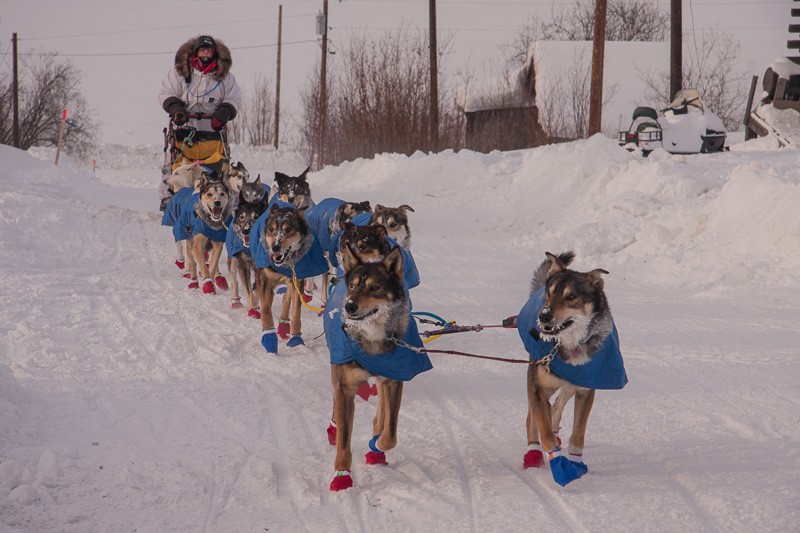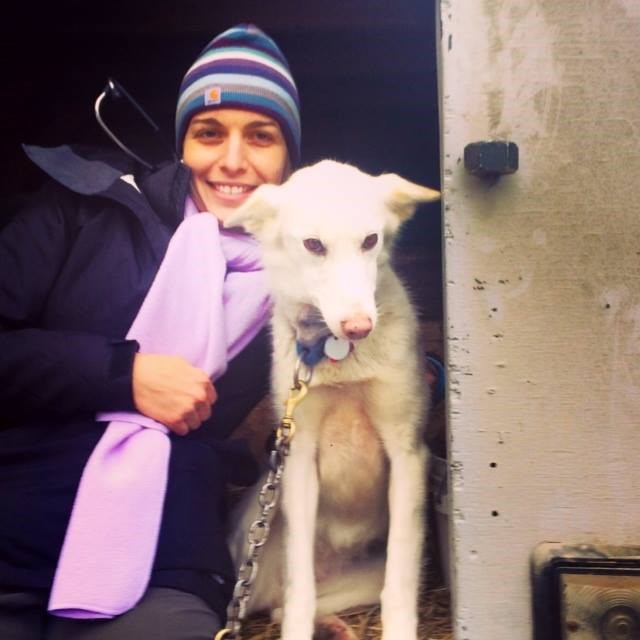Dr. Medora Pashmakova serves as a volunteer veterinarian at the Iditarod
I developed an interest in endurance athlete dogs in the last year and dove into researching their physiology, lifestyles, and race-related medical conditions. I am grateful to Dr. Mike Willard, an avid former sled dog veterinarian and researcher, who was an essential contact in introducing me to the Iditarod head veterinarian, Dr. Stuart Nelson.

Each year, the Iditarod race is supported by 30-50 volunteer veterinarians (approximately half are rookies and half are veterans). I volunteered as a rookie for the 2015 Iditarod. Dr. Nelson requested my presence in Anchorage during the race in my capacity as a criticalist, to receive and triage the “dropped dogs” from the race. Each team starts with a mandatory 16 dogs from Anchorage and traverses 1049 miles to reach Nome, Alaska. It is not unusual for a third of the starting dogs to be relieved from racing on the trail, or “dropped,” for a variety of behavioral, medical, or other issues. These dropped dogs are housed at the trail checkpoints and cared for by veterinarians and volunteers at every step. They are then flown back to Anchorage in a commercial airliner as a shipment of anywhere from 15-50 dogs. They are received at the Anchorage airport and taken directly to the Millennium Hotel, the headquarters of the Iditarod. There, a team of volunteers and veterinarians (including me) identify and examine each dog, providing basic treatment or referring for more advanced care to a local veterinarian or emergency facility. The most common medical issues included mild orthopedic sprains and strains, dehydration, or just being tired!

Many dogs just need a little rest and are otherwise healthy and can be picked up directly by their handlers. However, they are housed in the nearby Hiland Correctional Facility, where female prisoners take care of them until they are picked up. This facility is instrumental in caring for dropped dogs and has been for almost 30 years.
I spent a total of two weeks as a dropped dog veterinarian in Anchorage this year and can only say that receiving and caring for 300-400 dropped dogs exceeded all expectations and has been the most professionally rewarding experience in my career. Concurrently, the rest of the veterinarians for the race were spread out along the trail checkpoints and were caring for the health and well-being of 1400 or so dogs. Despite being dispersed among large and small towns-sometimes villages with only basic facilities-and all of us in frigid temperatures, the Iditarod race coordination was able to keep everyone in touch and execute a mission to keep both people and dogs safe in their travels to Nome. Huge team effort!
It’s been a blast out here. My hope is that this becomes an annual event and that we keep Texas A&M represented at the race, continuing the tradition that Dr. Willard started!


